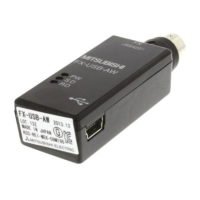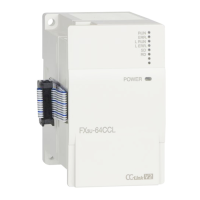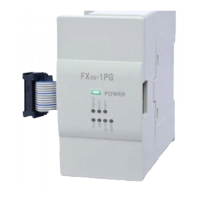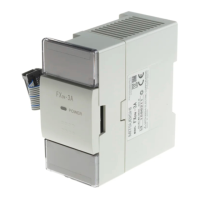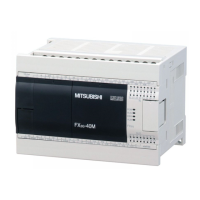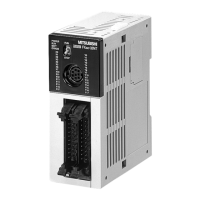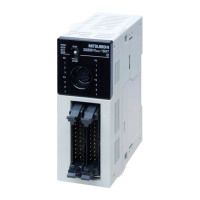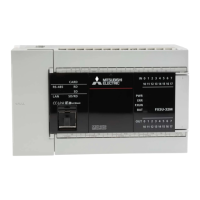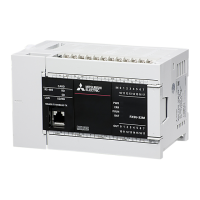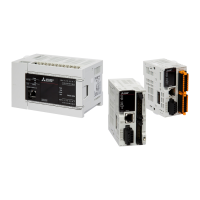7 Applied Instructions
7.14 Positioning Control
551
FXCPU Structured Programming Manual
(Basic & Applied Instruction)
1
Outline
2
Instruction List
3
Configuration of
Instruction
4
How to Read
Explanation of
Instructions
5
Basic Instruction
6
Step Ladder
Instructions
7
Applied
Instructions
8
Interrupt Function
and Pulse Catch
Function
A
Relationships
between devices
and addresses
7.14.7 DRVI
Outline
This instruction performs one-speed positioning by relative drive. The moving distance from the present
position is specified together with plus or minus sign, and this is also called increment (relative) driving
method.
→ As for explanation of the instruction, see the positioning control manual.
→ As for cautions of use of high speed output special adapter, see the positioning control manual.
1. Format and operation, execution form
2. Set data
3. Applicable devices
S: Refer to "Cautions".
FX3U(C) FX3G FX2N(C) FX1N(C) FX1S FXU/FX2C FX0N FX0(S)
Instruction
name
Operation
Execution
form
Expression in each language
Structured ladder ST
DRVI 16 bits Continuous DRVI(EN,s1,s2,d1,d2);
DDRVI 32 bits Continuous DDRVI(EN,s1,s2,d1,d2);
Variable Description
Data type
16-bit
operation
32-bit
operation
Input
variable
EN Execution condition Bit
Number of output pulses (relative address) ANY16 ANY32
Output pulse frequency ANY16 ANY32
Output
variable
ENO Execution state Bit
Device for issuing pulse (Y) Bit
Device of rotating direction signal Bit
Operand
type
Bit Devices Word Devices Others
System user Digit designation
System
user
Special
unit
Index
Cons
tant
Real
Number
Character
String
Pointer
XYMTCS
D
.b
KnX KnY KnM KnS T C D R
U\G
V Z Modifier K H E
"
"
P
z z z z zzz
S4 S5
zz z z z
z z z z zzz
S4 S5
zz z z z
S1
z
S2
zz
S3
z
DRVI
EN
s1
ENO
d1
d2s2
DDRVI
EN
s1
ENO
d1
d2s2
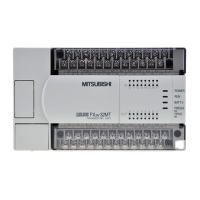
